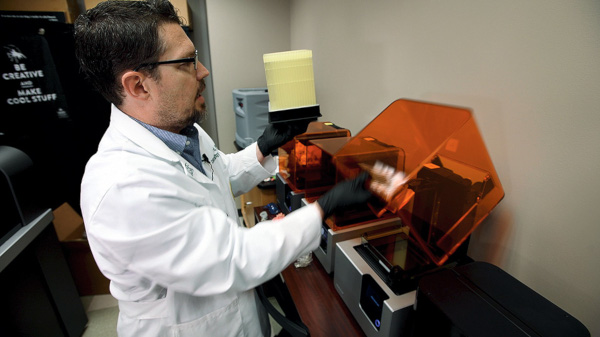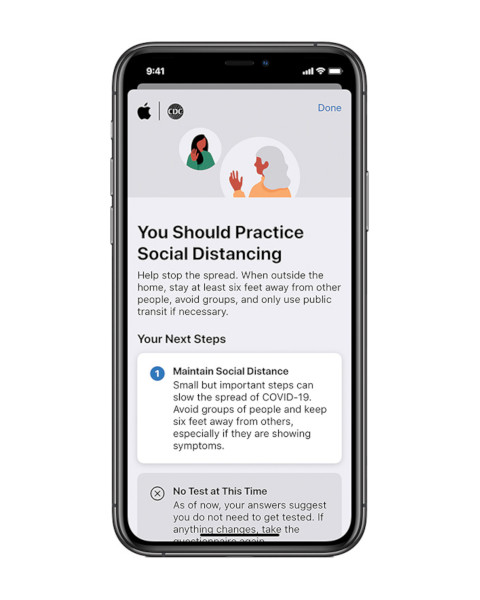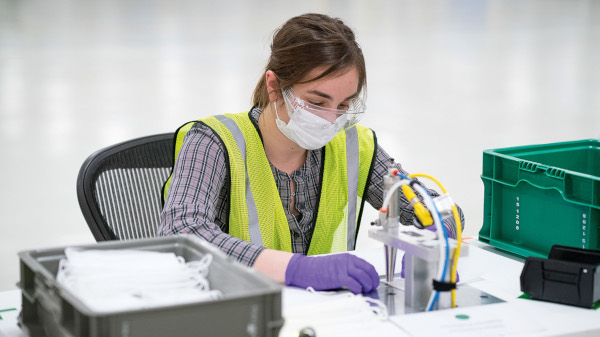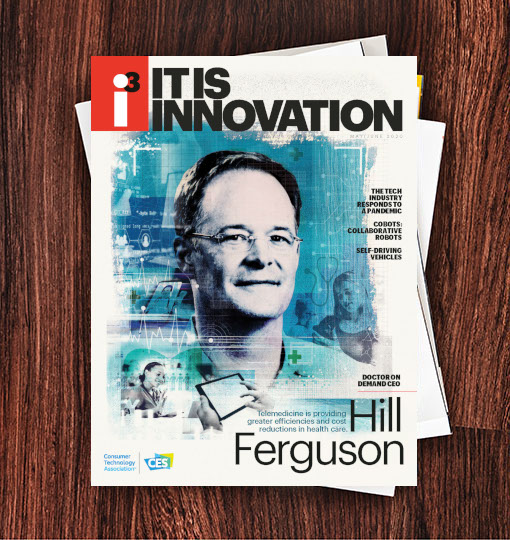
That inspired Formlabs and others to step in to offer help, creating, testing and redesigning new diagnostic tools in response to worldwide shortages. Some of the innovations were as basic as printing tools like swabs to test people for the virus.
Formlabs began working with Northwell Health and University of South Florida on the production of coronavirus test swabs in March when it became clear that there was a shortage of test kit components.
“We worked with a team at USF Health who created the initial design to develop prototypes printed with Surgical Guide, a biocompatible, sterilizable material from Formlabs,” says Manchanda. The swabs are flexible sticks that are inserted inside a patient’s nose.
These swabs, which were developed in one week, were successfully tested and green-lit so that they could be quickly fabricated at an Ohio-based printing facility. “With our fleet of close to 200 3D printers onsite,” says Manchanda, “we can produce more than 100,000 swabs a day at peak capacity.”
By the time the pandemic shut down communities worldwide, it became clear that the tech industry was in a unique position to respond. In many cases, it would mean appropriating tools in relevant ways.
For example, WHO began using WhatsApp, a messenger service that allows users to exchange text, video and images, to reach more people with facts about the virus, while tools like Silicon Valley’s Zoom (which went from hosting 10 million video conferences per day to 200 million) was revamped for both personal and professional meetings (hello, virtual happy hour). It was the same for Vancouver-based Slack, which has expanded from a professional video conferencing tool to a lifeline for families and friends who are physically distancing.
Literally the world’s most popular tech business tools had suddenly become great equalizers for connecting people during the worldwide lockdown.
The overwhelming response of manufacturers and service providers is being driven by innovation and leaders inspired to solve complex challenges. As new relationships are established between users and their tools, these experiences could ultimately change how people think about technology for years to come.
In some cases, the global response has meant giving people free access to technology and repurposing goods and services, while funding massive response efforts more locally.
For example, Zello, a push-to-talk voice messaging service based in Austin, enables collaboration between workers and the communities they serve. Unlike traditional radio transmission, Zello functions on any cellular network or Wi-Fi connection. The assistance has proven vital for communities that are hardest hit by the virus.
Bill Moore, CEO of Zello, says early in this pandemic the company anticipated pressures on hospital and first responder systems that could hamper life-saving work. Zello decided to make its solution available “in an effort to help curb the strain on these systems,” he says.

It’s helping first responders strapped for both funding and manpower during this crisis, like Captain Patrick Ryan of the Maury County Fire Department in Tennessee. He says, “Interoperability between different types of radio networks allows our departments to combine everyone’s radio channel onto one device.
Other tech giants like Apple in Cupertino, CA, have found new ways to share data. In partnership with the Centers for Disease Control (CDC), the White House’s Coronavirus Task Force and the Federal Emergency Management Agency, Apple launched a website and app dedicated to COVID-19 facts and resources to help users screen for symptoms while providing data on everything from testing to social distancing.
The CDC and other medical agencies have also repurposed online tools to disseminate facts about the virus, like chatbots from Redmond, WA-based Microsoft that answer questions about COVID-19 across diverse platforms. Overwhelmed switchboards at hospitals, for example, are using these AI-powered bots to manage calls.
Microsoft is also collaborating with the Institute for Health Metrics and Evaluation at the University of Washington to create a series of data visualizations to predict when the virus will peak in each state, while a new collaboration with biotech company Adaptive Biotechnologies in Seattle is studying immune responses to the virus. The hope is the research will yield advancements in treatment and ultimately a vaccine.
According to Dr. Peter Lee, corporate vice president of AI and research at Microsoft, “The solution to COVID-19 is not likely going to come from one person, one company or one country. This is a global issue, and it will be a global effort to solve it.”
The research and tools being developed in response to COVID-19 are being widely shared. The response to this virus has inspired unexpected partnerships between the tech and medical worlds.
For its part, IBM is helping to put data in the hands of users by developing a new incident map for COVID-19 with access to crisis communications, remote learning and other vital resources via Weather.com, which can track localized cases on smartphones and other web- and GPS-enabled devices.
Cameron Clayton, general manager of IBM’s The Weather Company in Atlanta, says the goal is to help users stay informed, and to provide resources that encourage people to better navigate stay-at-home orders and social distancing where they live. “We are all looking for data to help us make more informed decisions,” he says.
Response is also coming in the form of funding. Cisco Systems in San Jose, CA, has committed $225 million to the response, including support for the United Nations Foundation’s COVID-19 Solidarity Response Fund and WHO’s worldwide efforts to prevent, detect and manage the spread of the virus. The IT company is also providing state and local funding through its Country Digital Acceleration program, with free access to its online security tools during the pandemic.
Likewise, the Sony Global Relief Fund for COVID-19 has provided $100 million to help workers who have been hardest hit by the pandemic. According to Lisa Gephardt, senior director of corporate communications for Sony Corp. of America, “With the world facing unprecedented challenges, as a global company we believe we have an important responsibility to society, and as a creative entertainment company with a solid foundation of technology, we want to help restore peace of mind, and contribute to filling the world with emotion.”

When the U.S. government placed the call for more personal protective equipment, GM answered. The Detroit-based automaker is one of several U.S. manufacturing giants that’s successfully transitioned its supply chain from making vehicles to in-demand medical supplies.
“Our ultimate goal is to get more masks to people who desperately need them,” says Shilpan Amin, GM’s vice president of Global Purchasing and Supply Chain. Not only is the automaker’s production plan and willingness to share design specifications inspiring other manufacturers to accelerate their own production of vital medical supplies, they’ve become a case study in how a company can literally shift gears to fulfill the needs of communities they serve in times of crisis.
“Our team at GM has shown ingenuity, creativity and heart as we face this pandemic,” Mark Reuss, GM’s president, says. “We have mobilized our manufacturing capacity to aid in response efforts, and we’ve been actively engaged in our communities to help find solutions to new and compounding challenges.”
GM reports it can make as many as 50,000 masks per day, while they have also licensed a ventilator design in a bigger effort that includes Ford Motor Company. Together they expect to produce 50,000 new ventilators by July.
It required cooperation and training, says Karsten Garbe, GM’s plant director for Global Pre-Production Operations. “In a few days,” she says, “the company’s seat belt and interior trim experts became experts in manufacturing face masks.”

I3, the flagship magazine from the Consumer Technology Association (CTA)®, focuses on innovation in technology, policy and business as well as the entrepreneurs, industry leaders and startups that grow the consumer technology industry. Subscriptions to i3 are available free to qualified participants in the consumer electronics industry.